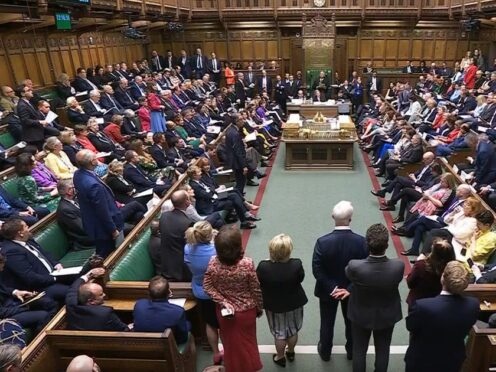This summary of claims from the campaign trail has been compiled by Full Fact, the UK’s largest fact checking organisation working to find, expose and counter the harms of bad information, as part of the PA news agency’s Election Check 24.
What is a ‘supermajority’?
A new term has entered the general election lexicon as campaigning intensifies, with some predicting a Labour “supermajority” in the House of Commons after 4 July.
The word appears to have entered common parlance, with defence secretary Grant Shapps using it earlier this month, and the front page of the Daily Mail and a BBC Question Time special among the places we’ve seen it in recent days.
But the term “supermajority” has no specific meaning in the UK parliamentary system.
The Institute for Government has argued that, in parliamentary terms, the difference between a majority of 80 seats (which the Conservative party won in the 2019 election) and a 200-seat majority is “not material”.
And the Electoral Reform Society says a party with a majority of just one can legislate on anything it likes, as long as it can keep its backbenchers “in line”.
The term may have gained traction in the UK because it is a genuine part of the US federal system. There, a supermajority is a qualified majority of two thirds.
In the US there are several significant legislative actions that require a supermajority vote in either the House of Representatives or Senate, such as impeaching the president, declaring a president incapable of serving under the 25th Amendment or amending the constitution. Some other parliaments also require a qualified majority before constitutional changes can take effect.
In the UK, there are no such rules, but the relative number of seats won by the government and opposition parties does have some practical implications.
The number of seats can affect how many select committee chairs, and members, a party holds. And winning fewer seats as an opposition party can come with a financial cost, because the formula used to allocate ‘Short Money’ funding to opposition parties is linked to the number of seats they win.
Immigration returns
Talking about “people that don’t have a right to be here” on the BBC’s Sunday with Laura Kuenssberg, Labour shadow education secretary Bridget Phillipson claimed: “Returns have fallen through the floor.”
It’s unclear what she meant by this, however, as the total number of people without the legal right to stay in the UK who have been returned to another country—whether on a voluntary or enforced basis—has risen recently.
In the year ending March 2024 there were 7,016 enforced returns (up 70% year-on-year) and 21,171 voluntary returns (up 65% year-on-year).
However while these figures have steadily risen over the last few years, the two combined were higher prior to 2019.
It’s important to remember that the changing number of returns doesn’t necessarily reflect the proportion of people ineligible to be here who were removed. Nor does it tell us how many people were being deterred or prevented from illegally entering or remaining in the UK.
